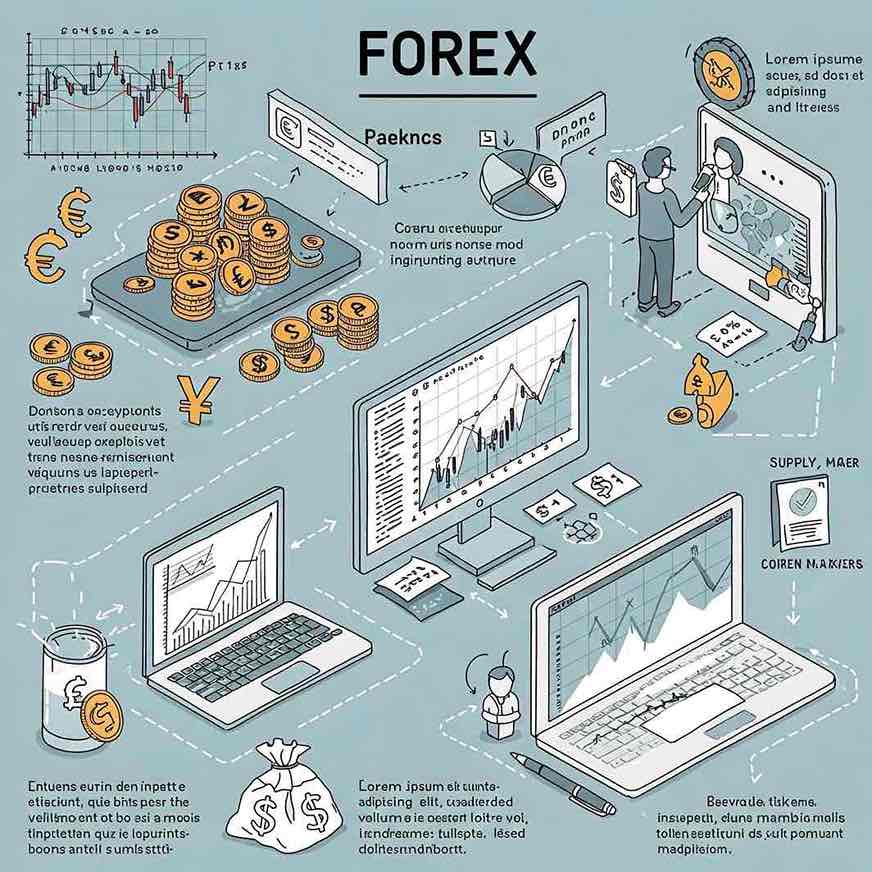How forex works
Forex trading centers on exchanging currencies in pairs, like EUR/USD or USD/JPY, with the aim of profiting from fluctuations in their values. The market operates 24 hours a day across global hubs–Tokyo, London, New York–with daily trading volumes exceeding $7.5 trillion. Liquidity varies by session: the London-New York overlap sees the highest activity, offering tighter spreads (often below 1 pip for majors) and faster execution. Use platforms like MetaTrader 4 or TradingView to monitor real-time pricing and analyze order flow depth.
Currencies trade in standardized lots: 100,000 units for a standard lot, 10,000 for a mini, and 1,000 for a micro. Leverage amplifies exposure; a 50:1 ratio allows controlling $100,000 with $2,000 margin. However, leverage escalates risk–a 2% move against a 50x leveraged position wipes out capital. Apply stop-loss orders 1-2% below entry points and calculate position size using the formula: (Account Risk % × Balance) ÷ (Stop-Loss in Pips × Pip Value). For a $10,000 account risking 2%, a 50-pip stop on EUR/USD limits position size to 0.4 lots.

Price movements correlate with macroeconomic shifts. Monitor central bank policies–the Federal Reserve’s interest rate hikes in 2023 strengthened the USD by 12% against JPY. Pair this with technical analysis: a breakout above a 200-day moving average on GBP/USD signals bullish trends. Backtest strategies on historical data using tools like MT5’s Strategy Tester, focusing on risk-reward ratios above 1:3. Avoid overtrading; 70% of retail traders lose money within three months, often due to emotional decisions.
How Forex Works
Foreign exchange trading involves simultaneous buying and selling of currencies through decentralized global markets. Transactions occur 24/5 across financial hubs like London, New York, and Tokyo, with $7.5 trillion traded daily.
Currencies trade in pairs (e.g., EUR/USD, USD/JPY). The first currency is the base; the second is the quote. Exchange rates reflect how much quote currency is needed to buy one unit of the base currency. A EUR/USD rate of 1.10 means €1 = $1.10.
Key Mechanics:
- Leverage: Brokers offer up to 500:1 leverage. Example: $500 controls $250,000 in trades. High leverage multiplies gains and losses.
- Spreads: Difference between bid (buy) and ask (sell) prices. Major pairs like GBP/USD average 0.8-1.5 pips.
- Lot sizes: Standard lot = 100,000 units. Mini (10,000) and micro (1,000) lots reduce risk for beginners.
Price movement drivers:
- Central bank policies (e.g., Federal Reserve interest rates).
- Economic data (GDP, CPI, unemployment).
- Geopolitical events (elections, trade wars).
Practical Trading Steps:
- Open a demo account with MT4 or TradingView to test strategies.
- Analyze charts using 50-day EMA or stochastic oscillators.
- Set stop-loss orders at 1-2% of account balance per trade.
- Close positions before major news releases if risk tolerance is low.
Avoid emotional decisions. Backtest strategies across 100+ trades using historical data. Track performance metrics: win rate, risk-reward ratio (aim for ≥1:2), and maximum drawdown.
What Determines Exchange Rates in Currency Pairs?
Interest Rate Policies: Central banks directly influence currencies through rate decisions. For example, the Federal Reserve’s 2022 rate hikes (from 0.25% to 4.5% in 12 months) strengthened the USD by 18% against the Japanese Yen. Investors flock to higher-yielding currencies, creating demand surges.
Inflation Comparisons: Persistent inflation gaps drive long-term trends. When Eurozone inflation hit 10.6% in 2022 versus the U.S.’s 8%, the EUR depreciated 12% against the CHF, which had 3% inflation. Lower inflation preserves purchasing power, boosting currency value.
Trade Imbalances: Export-heavy economies like Germany (€280B trade surplus in 2023) see stronger currencies due to foreign buyers converting funds. A $60B U.S. trade deficit in July 2023 weakened the USD/CAD by 1.3% monthly.
Political Shocks: Sudden instability triggers rapid sell-offs. The British Pound dropped 9% in a week after the September 2022 mini-budget crisis, despite BoE interventions. Safe-haven flows during the 2020 pandemic boosted the JPY by 6% against commodity currencies.
Speculative Activity: Over $6.6 trillion in daily FX trading is driven by algorithms and hedge funds. A 2021 JPMorgan study found speculative positions caused 70% of EUR/USD’s 4% swing during ECB meeting dates, independent of economic data.
Managing Risk with Leverage and Margin Requirements in Forex Trading
Set maximum leverage limits based on account size and volatility tolerance. For example, traders with accounts under $5,000 should avoid exceeding 10:1 leverage, while experienced traders might use 30:1 with strict stop-loss protocols.
Margin requirements directly impact risk exposure:
- A 2% margin requirement (50:1 leverage) requires $2,000 to control a $100,000 position.
- A 5% margin requirement (20:1 leverage) demands $5,000 for the same position, reducing liquidation risk.
Calculate margin usage dynamically: if EUR/USD drops 1%, a 50:1 leveraged position loses 50% of margin. Use stop-loss orders at 1-2% of account equity per trade to limit losses. For a $10,000 account, risk $100-$200 per trade.
Example: A trader using 30:1 leverage on GBP/USD ($300,000 position) with a 3.33% margin ($10,000) must maintain at least $6,667 (margin call threshold typically at 50-80% of initial margin). A 100-pip drop (≈1%) wipes out $3,000, triggering margin calls if equity falls below broker requirements.
- Monitor margin levels daily; reduce position sizes during high volatility.
- Use negative balance protection brokers to prevent account deficits.
- Test leverage strategies in demo accounts for ≥3 months before live trading.
Adjust leverage inversely to market stability: decrease ratios during news events (e.g., FOMC announcements) and increase during range-bound conditions. Track margin-to-equity ratios–keep below 15% for swing trading, 5% for day trading.
